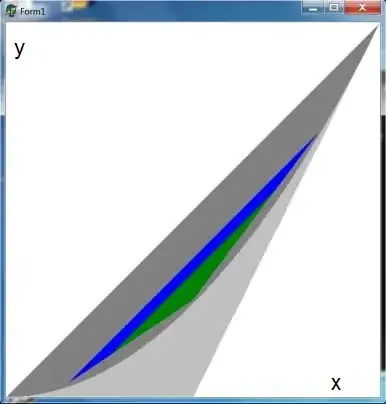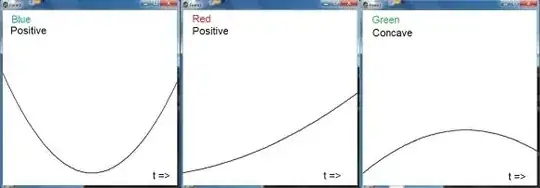Relevant questions and answers, in chronological order:
- When do equations represent the same curve?
- Find a smooth function with prescribed moments
- Does a sequence of moments determine the function?
Special theories
Couldn't proceed with the general, so I've tried some special cases. Because I think it's better to be successful with something special than to fail with anything general. This is the reason why I've payed so much attention to extremely simple PDF-functions, sample functions namely that are completely determined by their first few moments. Among these are:
- histograms consisting of three blocks with the same width

The three moments $\,m_0,m_1,m_2\,$ are linear in the three function values
$f_0,f_1,f_2$ and vice versa. Meaning that there is a one-to-one mapping between
function space and moment space $\,(x=m_1/m_0,y=m_2/m_0)\,$ where $m_0 = 1$ .
The moment space of 3-histograms is in the picture below. If the only
requirement is that the histogram is just positive (and with area $= 1$) then
what we have is the $\color{blue}{blue\; triangle}$. If an additional requirement
is that the histogram is concave then we have the $\color{green}{green\; triangle}$
as a proper part of the blue one. Let's formulate this as follows.
Consider the
universe of all PDF 3-histograms, what then is the chance that such a histogram
is concave ? The answer must be the quotient of the areas of
the green and the blue triangle. With the above reference that is: $\,(4/243) / (1/27) = 4/9$ .
With other words: $\large 4/9$ of all histograms in our special universe are concave.

But this is indeed a very simple example. A couple of questions arise:
- In general, has an idea like this been launched before?
-
If not in general, do there exist other special examples of PDF universes
where the question "what is the chance that a PDF is concave" makes sense?

